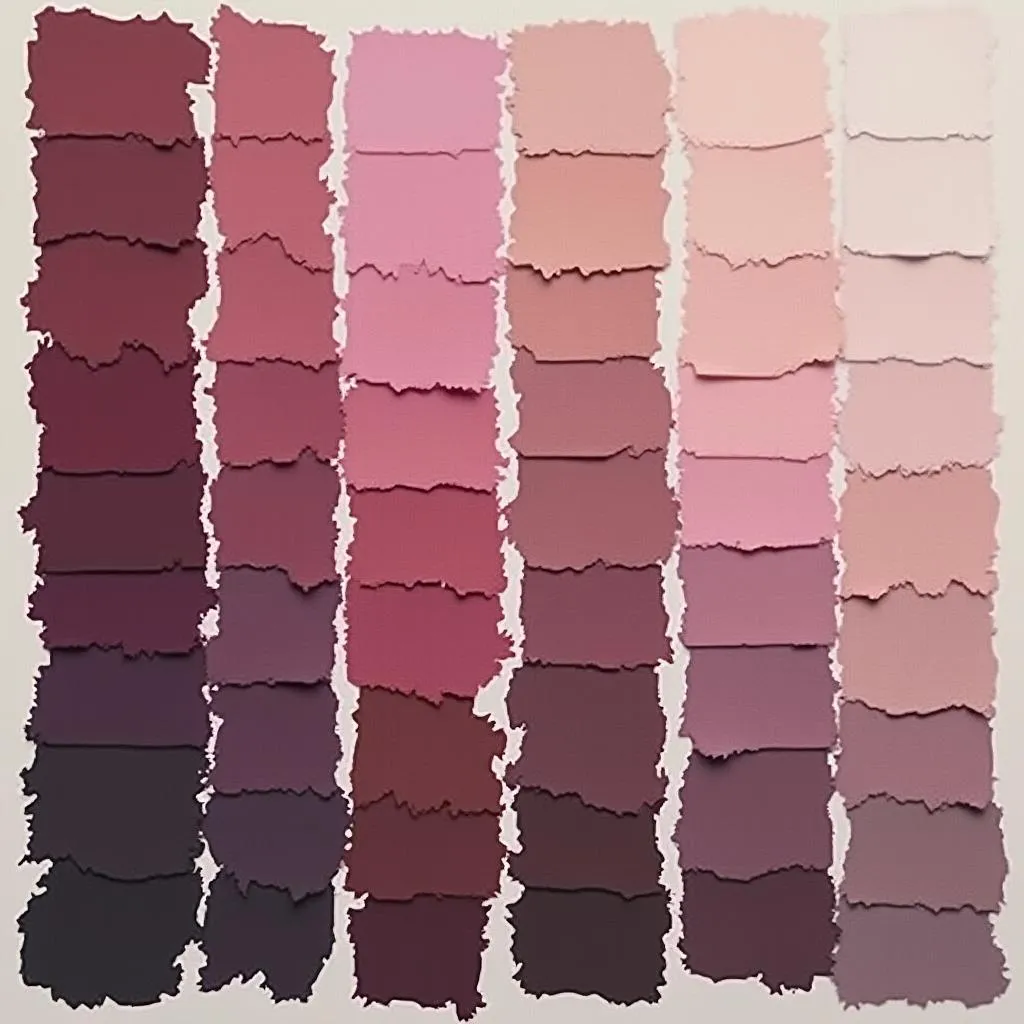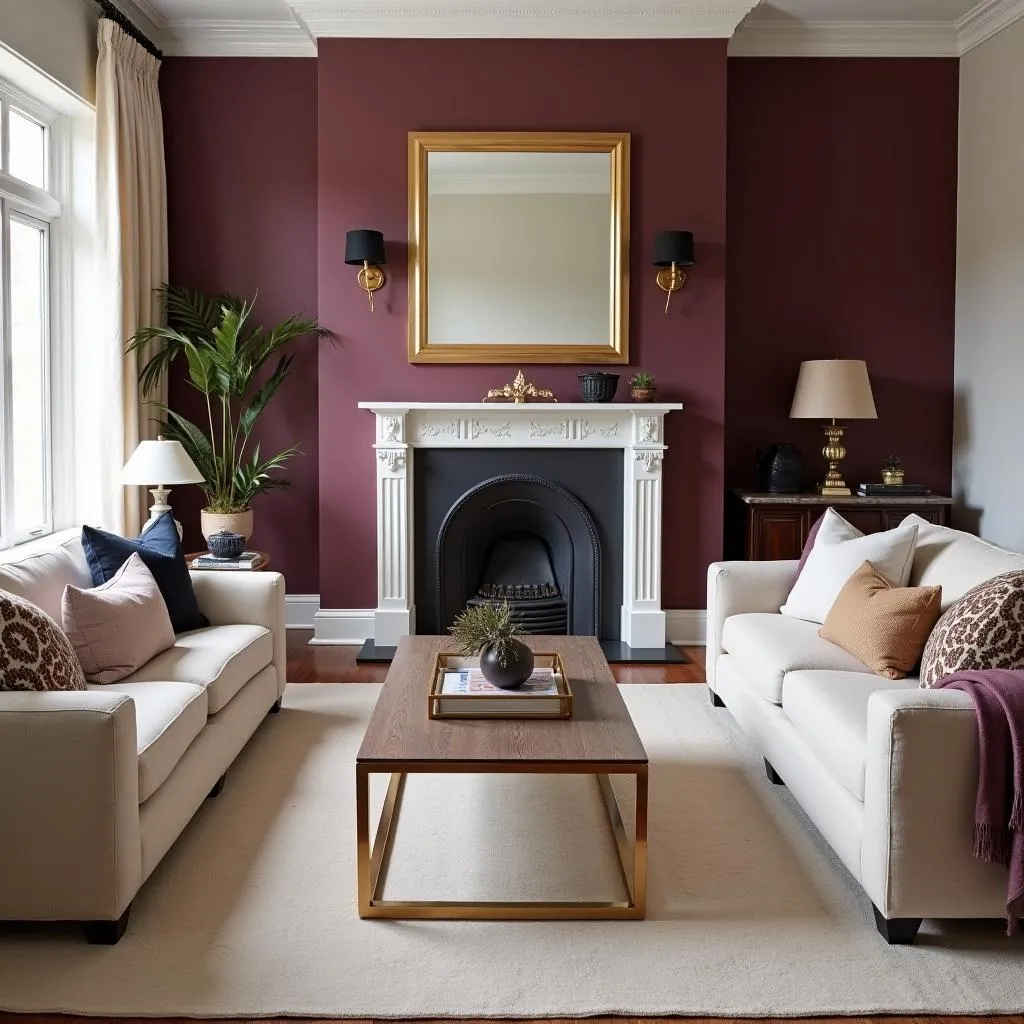Mulberry color is a rich, purplish-red hue that evokes the ripe berries of the mulberry tree. It’s a versatile color that can be both warm and cool, depending on the surrounding colors and lighting. Often associated with royalty, luxury, and creativity, mulberry has graced the worlds of fashion, art, and interior design for centuries.
Unraveling the Rich History of Mulberry Color
The history of mulberry color is deeply intertwined with the cultivation of silkworms, those fascinating creatures that feed on mulberry leaves. The practice of sericulture, or silk production, originated in ancient China and eventually spread throughout Asia and Europe. The vibrant purple dye extracted from mulberry fruit became a sought-after commodity, adorning the garments of emperors and nobles alike.
Over time, the association of mulberry color with luxury and refinement solidified. In Victorian England, for instance, deep shades of mulberry were a popular choice for formal wear and home décor.
Defining Mulberry: A Color Between Red and Purple
Mulberry color often sparks debate: Is it more red or purple? The answer, like the color itself, is nuanced. Mulberry sits beautifully between red and violet on the color wheel, borrowing depth from the former and a touch of coolness from the latter. Its precise placement can vary slightly depending on the specific shade, leading to a spectrum of mulberry hues ranging from vibrant reddish-purples to deeper, more subdued tones.
Exploring Various Shades of Mulberry
Just like the fruit it’s named after, mulberry color comes in a variety of delightful shades. Here are some of the most common ones:
- Deep Mulberry: This rich, almost-blackish shade of mulberry exudes sophistication and elegance.
- Red Mulberry: As its name suggests, this shade leans more towards red, bringing warmth and vibrancy to any space.
- Purple Mulberry: This cooler shade of mulberry has a sense of tranquility and serenity.
- Dusty Mulberry: This muted, slightly grayed-down version of mulberry offers a subtler take on this versatile hue.
 Mulberry Color Swatches
Mulberry Color Swatches
Incorporating Mulberry Color into Your Home
Mulberry’s versatility makes it a welcome addition to any room in your home.
- In the living room: Mulberry can create a dramatic statement wall or add a touch of elegance to accent pieces like cushions and throws.
- In the bedroom: Its deep, rich tones can create a cozy and intimate atmosphere. Consider using it for bedding, curtains, or even an accent wall behind the headboard.
- In the dining room: Mulberry can add a touch of formality and sophistication. Use it for tablecloths, napkins, or even paint the walls in a lighter shade of mulberry to create a welcoming and elegant ambiance.
What Colors Go With Mulberry?
Mulberry plays well with a wide range of colors. Here are a few ideas to get you started:
- Neutrals: Pair mulberry with white, cream, beige, or gray for a classic and timeless look.
- Gold: The combination of mulberry and gold screams luxury and opulence.
- Teal: For a bolder look, try pairing mulberry with teal. The contrast between these two colors is both striking and visually appealing.
- Green: Mulberry and green create a natural and harmonious pairing, reminiscent of the mulberry tree itself.
 Living Room with Mulberry Accent Wall
Living Room with Mulberry Accent Wall
Mulberry Color in Fashion and Design
Mulberry transcends trends, making its mark in the worlds of fashion and design.
- Fashion: On the runway and in everyday wardrobes, mulberry adds a touch of sophistication. Think silk blouses, flowing dresses, or even a statement handbag.
- Interior Design: From upholstery to paint colors, mulberry can transform a space. It’s particularly striking in velvet, adding a layer of texture to its visual depth.
- Graphic Design: Mulberry can add a touch of elegance and sophistication to logos, branding materials, and websites.
Conclusion
Mulberry color, with its rich history and versatile nature, offers endless possibilities for self-expression. Whether you’re drawn to its luxurious connotations, its ability to create a cozy atmosphere, or its striking visual impact, mulberry has something to offer everyone. So, why not embrace this fascinating hue and see what creative endeavors it inspires in you?
FAQs
1. Is mulberry a warm or cool color?
Mulberry is considered a complex color that can lean towards both warm and cool, depending on its undertones and surrounding colors.
2. What is the difference between mulberry and burgundy?
While both share reddish-purple tones, burgundy tends to have more brown in its base, making it appear warmer than mulberry.
3. What is a good accent color for mulberry?
Gold, teal, green, and various neutrals like white and gray all pair beautifully with mulberry.
4. Is mulberry a good color for a bedroom?
Yes, mulberry’s deep, rich tones can create a cozy and intimate atmosphere in a bedroom.
5. Where can I find mulberry-colored paint?
Most major paint brands offer a selection of mulberry shades. You can also ask for custom color matching at many paint stores.
Need help incorporating the captivating color of mulberry into your home or have other color inquiries? Don’t hesitate to reach out! Contact us at Phone Number: 0373298888, Email: [email protected], or visit us at 86 Cầu Giấy, Hà Nội. Our dedicated customer support team is available 24/7 to assist you. You can also find more helpful tips and inspiration on our website: what is the color mulberry.

